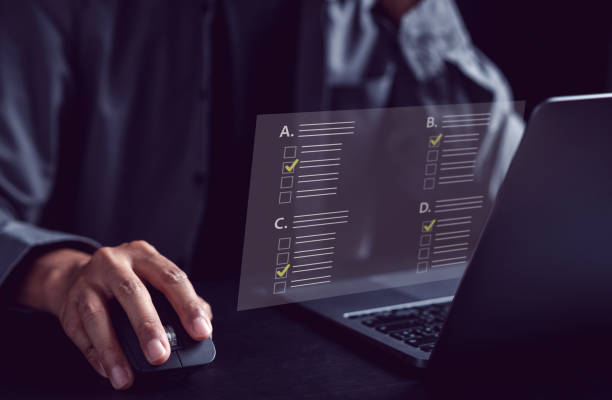5 Essential Steps for Building a Resilient Leadership Development Program in a Disrupted Market

In today’s fast-paced business environment, organizations are facing constant disruptions, whether it’s the introduction of new technologies, changes in market trends, or global crises like the COVID-19 pandemic.
These disruptions have significant impacts on businesses, and leaders need to be prepared to navigate them effectively. One way to build the necessary resilience is through a robust leadership development program.
In this post, we will discuss the essential steps for building a resilient leadership development program in a disrupted market.
We’ll explore how organizations can assess their leadership development needs, define learning objectives, design and deliver the program, and evaluate and revise it over time.
Resilient Leader Principles
- Aligns Vision & Purpose
Vision and purpose are the keys to self-assuredness. But when external circumstances are highly challenging, it’s hard to stay true to the vision and to maintain one’s confidence.
How can a leader balance and maintain a common vision and team alignment around a shared purpose while also adapting to the circumstances?
- Manages Self Through Uncertainty
Just like athletes, corporate leaders are expected to perform at all times which generates a lot of stress— especially in times of uncertainty.
Instead of clinging to the predictable, how can leaders develop coping mechanisms to better regulate stress and leverage emotions towards positive outcomes, for themselves and their teams?
- Builds Awareness And Anticipation
A widely accepted trait of a great leader is the ability to plan and anticipate. At the same time, leaders are expected to show discernment and make the right decisions in the moment, particularly in high-stakes or high-tension situations.
How can leaders build an understanding of the context in all its complexity and make it evolve continuously as things unfold? And how can they convey that dynamic thinking to a larger team?
- Overcomes Challenges With Tenacity
The tenacity dimension of resilience refers not only to the effort needed to win, but to the ability to accept failure as part of the learning process.
From a leader’s standpoint, being able to overcome life’s and work’s challenges, obstacles and setbacks is a discipline that can be consciously practiced and implemented.
- Adopts A Growth Mindset
A growth mindset is a deep belief in people’s ability to develop— starting with yourself. For athletes and leaders, acknowledging strengths and weaknesses, mapping the path to growth and building on adversity as a driver of improvement are key elements of resilience. Resilient leadership takes this even further by developing the ability for growth in others.
Also read: Boosting Workplace Performance: 10 Tips for Developing an Effective Corporate Learning Strategy
5 Essential Steps for Building a Resilient Leadership Development Program in a Disrupted Market
To build a resilient leadership program in a disrupted market, here are steps to follow:
Step 1: Conduct a Needs Assessment
The first step in building a resilient leadership development program is to conduct a needs assessment. This involves gathering information about the organization’s current leadership development practices and identifying gaps and opportunities for improvement.
A needs assessment is a critical component of program design because it ensures that the program is tailored to meet the organization’s specific needs.
There are several methods for conducting a needs assessment, including surveys, focus groups, interviews, and assessments.
The key is to gather input from a range of stakeholders, including senior leaders, managers, and employees. This will help ensure that the program is aligned with the organization’s strategic objectives and is relevant to the needs of its employees.
Once the needs assessment is complete, the organization can use the results to inform the design of the leadership development program.
Step 2: Define Learning Objectives
The second step in building a resilient leadership development program is to define learning objectives. Learning objectives are specific, measurable goals that outline what participants will learn and be able to do as a result of the program.
They are essential because they provide a roadmap for program design and ensure that the program is aligned with the organization’s strategic objectives.
When defining learning objectives, it’s important to ensure that they are specific, measurable, and relevant.
This means that they should be written in a way that clearly articulates what participants will learn and be able to do, and they should be measurable so that the organization can assess whether participants have achieved the desired outcomes.
Additionally, learning objectives should be relevant to the organization’s strategic objectives and the needs of its employees.
Step 3: Design the Program
The third step in building a resilient leadership development program is to design the program. This involves identifying the key components of the program, such as the curriculum, the format, and the delivery methods.
When designing the program, it’s important to consider the needs and preferences of the participants. For example, some employees may prefer in-person training, while others may prefer virtual training.
Additionally, the program should be designed to be engaging and interactive to ensure that participants remain interested and invested in the learning process.
Another important consideration when designing the program is the selection of trainers and facilitators. Trainers and facilitators should have experience in leadership development and be able to effectively deliver the program content.
They should also be skilled in facilitating discussions and activities that promote learning and engagement.
Step 4: Deliver the Program
The fourth step in building a resilient leadership development program is to deliver the program. This involves delivering the program content to participants and ensuring that they are engaged and invested in the learning process.
There are several delivery methods for a leadership development program, including in-person training, virtual training, and self-paced online learning.
The delivery method will depend on the needs and preferences of the participants, as well as the resources available to the organization.
When delivering the program, it’s important to create a positive learning environment that encourages participation and engagement.
This can be achieved through the use of interactive activities, group discussions, and case studies that allow participants to apply their learning to real-world scenarios.
Conclusion
Building a resilient leadership development program in a disrupted market requires a strategic and deliberate approach.
The five essential steps outlined in this article – conducting a needs assessment, designing a comprehensive program, incorporating a variety of learning methods, providing ongoing support and evaluation, and adapting to changing circumstances – are critical to the success of any leadership development initiative.
Ultimately, investing in leadership development is not just a smart business decision, it is also a strategic investment in the long-term success of an organization.
With the right program in place, organizations can cultivate a pipeline of strong, capable leaders who are equipped to guide their organizations through any challenge that may arise.






